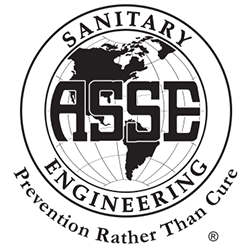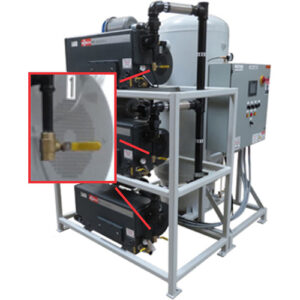In the healthcare industry, the medical air used for patient care must be processed, sanitized and dried before it is acceptable for patient applications and specialized hospital procedures. Medical air dryers are designed to eliminate the water vapor that is naturally created during the process of compressing air. When air compresses, the air temperature rises,… read more
News
Should My Medical Vacuum System Have Drip Legs?
In the world of lubricated medical vacuum pumps, running a pump out of oil is one of the greatest threats to the system. Oil is absolutely necessary in a lubricated pump. Oil lubricates and keeps the pump cool, efficient and running smoothly. In normal day to day operations, vacuum pumps tend to pass a very… read more
What is Medical Air?
Medical air differs from ordinary air. It is an ultra-clean, dry, purified air. When mixed with other medical gases, this air can be suitable for a human to breathe. Medical air compressors must be able to deliver this air to patients at any needed moment, on demand. Medical air must be available to patients 24… read more
What’s the Difference Between Oil-less and Oil-free Compressed Air?
Do you hear about “oil-free compressors” and “oil-less compressors” and wonder what the difference is? They both appear to be the same. More importantly, how does this apply to your healthcare medical air supply? For a detailed explanation of the following, refer to NFPA99, Edition 2012, Compressors for Medical Air Sections 5.1.3.6.3.4 through 5.1.3.6.3.14. Compressors… read more
Rotary Claw Vacuum Pumps – Save Energy and Reduce Utility Costs
When it comes to healthcare source equipment, we are looking at some pretty stiff energy and utility usage. This, of course, adds up to big costs. There are a couple of ways to help reduce medical vacuum energy consumption. One of them is to upgrade to efficient rotary claw vacuum pumps (case study). Check out… read more
Case Study – Rotary Claw Vacuum Pumps are a Great Alternative
This medical facility had two 20 HP rotary screw medical vacuum pumps. The units were approximately 15 years old. When they began to have problems, they decided to replace the pumps. Even though the hospital had relatively trouble-free vacuum with these pumps, there were major downsides. One huge factor was the noise the pumps generated…. read more
What is the Difference Between Medical Air and Oxygen?
There are several distinct differences between medical air and oxygen for patient use. Without getting too technical, a brief explanation of both is below: Medical Air: Medical air differs from oxygen and ordinary air. It is an ultra-clean, dry, purified, colorless, odorless, non-flammable gas. Its main components are nitrogen, oxygen and argon. It also has trace… read more
So, Who’s Watching the Hen House?
Medical gas testing companies specialize in medical gas distribution systems. As such, they are responsible for testing and certifying hospital and surgery medical gas equipment and distribution systems. This includes the testing and/or certifying of medical air and medical vacuum source equipment. Medical air and vacuum source equipment are critical patient life support systems. They… read more
Case Study – Botched Service Causing High Dew Point Alarms
Facilities management at a hospital called with a complaint of high dew point alarms. We responded to the call and inspected the medical air equipment. The first item our technician found wrong was the valve feeding air to the dew point monitor. The valve was half-way closed cutting off the full air flow to the… read more
Should I Retrofit or Replace My Source Equipment?
When discussing extensive source equipment repairs, this question is asked more frequently than any other. Both scenarios have their own sets of pros and cons. A few are listed below: Purchasing a New System PRO’s: Brand new equipment has the most current technology A new system is more cost-effective and efficient when it comes to… read more

















